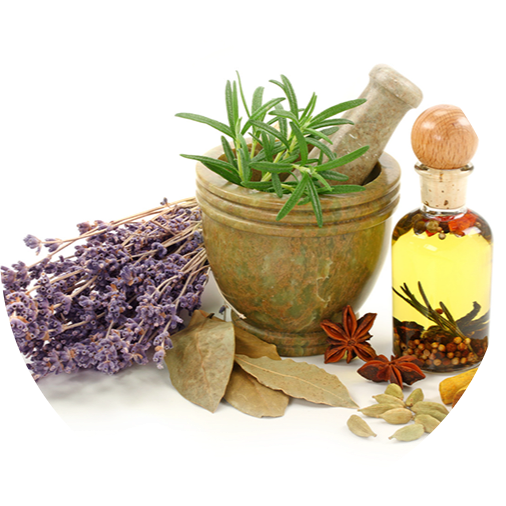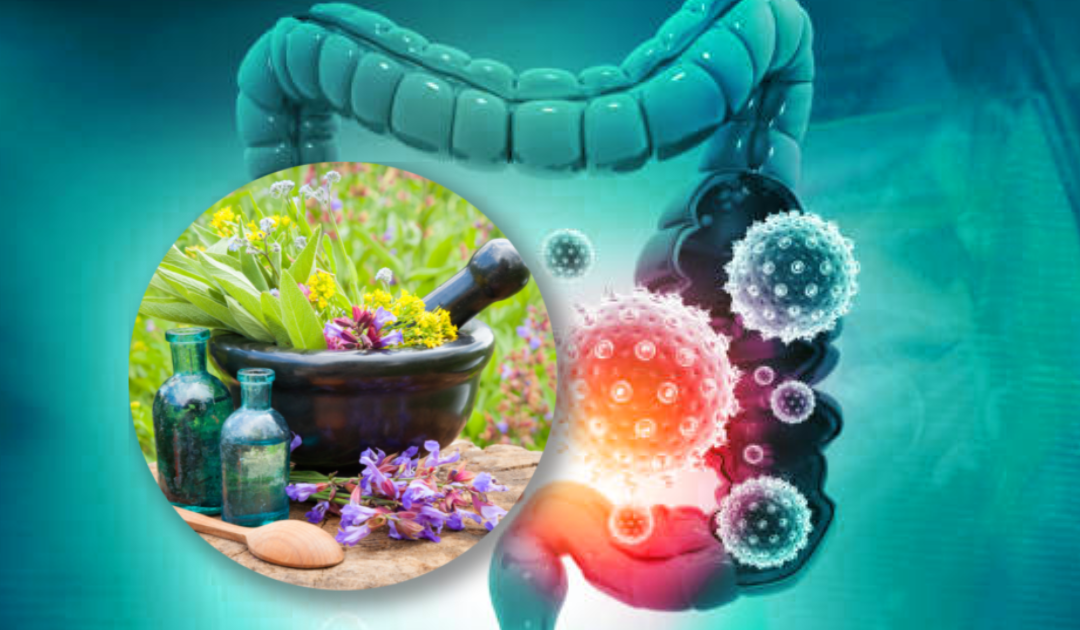
It is very important to note again that if you notice any symptoms of SIBO and it starts to get worse, for example, food runs through the digestive system in 1 hour and it seems to be undigested, see a doctor immediately. Antibiotic (rifaximin) is usually given to treat SIBO, which only works in the gut. 1 cure may not be enough.
I had 5. However, if your symptoms return despite medication, you can to try the alternative suggestions below. If the symptoms of SIBO have resolved with rifaximin, it is still advisable to use the alternative protocol mentioned below.
Remember, this is your intestinal system, the health of which affects many physiological processes, so your quality of life is highly dependent on the health of your intestinal system. It is worth maintaining it even after recovery.
Treatment of SIBO
Steps you need to follow!
Don’t feed the pathogens
Eridication of pathogens
Effect of berberine on SIBO
Berberin inhibits the growth of pathogenic bacteria that cause diarrhea, thereby relieving the symptoms of diarrhea. SIBO can be a great help in case of intestinal inflammation problems.
Insulin resistance often develops as a result of intestinal problems. The blood sugar optimizing effect of Berberin prevents the development of insulin resistance and reverses existing insulin resistance, promotes weight loss
It also inhibits Candida overgrowth, SIBO and prevents leakage. Berberine does not choose between good and bad bacteria, but it does less harm to good bacteria than antibiotics. It is worth taking it with a probiotic, but while the eradication is in progress, only soil bacteria should be taken, followed by others. This will be discussed later.
You can find Berberin in the webshop here: Berberin
If you have a rash, Oregano capsules can be good to take as a fire extinguisher due to its antimicrobial effect.
Initial malaise
Although many patients feel better soon after starting treatment, there are those who experience the negative effects of bacterial death almost immediately. Dying bacteria often begin to produce amounts of toxins that the body cannot handle, causing unpleasant symptoms. You should not be afraid if you notice any of the following symptoms:
- Brain fog
- Memory impairment
- Dizziness
- Headache
- Fatigue
- Anxiety or irritability
- Gas formation, bloating
- Diarrhea or constipation
- Joint and muscle pain
Although the symptoms are not pleasant, they indicate that you are well on your way to recovery.
3 detoxification options if you are very bothered by the above symptoms:
Sit in an infrared sauna, which is tolerated relatively well by the body, even in the case of histamine intolerance, so that toxins are cleared quickly through sweating.
Soak yourself in bitter water for half an hour. The epsom salt breaks down into magnesium and sulfates and is absorbed through the skin, reducing muscle pain, cramps and even detoxifying (put 30g of epsom salt and 30g of baking soda in 1 tub of water)
Take a charcoal tablet. Carbon binds toxins and removes them from the body.
In all three cases, drink a lot. Preferably 3 l of clean water.
Restore good bacteria
It is a very important step to restore good bacteria in the gut for optimal digestion and absorption of nutrients.
It is advisable to take a probiotic only after the antibiotic and only what has been detected in the Intestinal genome or a simpler intestinal flora status test. If you are not taking a probiotic to make up for the missing bacteria in your gut, you are not actually doing anything, but you may even be doing yourself a foul because an overgrowth of good bacteria can result in SIBO !!!!
Among the good bacteria in the small intestine, lactobacillus or bifidobacterium species tend to multiply. The small intestine is not meant for bacteria to rest in it. Since most probiotic preparations contain lactobacillus or bifidobacteria, using this type of probiotic will only increase the bacteria in your small intestine by throwing oil on the fire. This is why it is very important to know the composition of your intestinal flora.
In the case of SIBO,
it is recommended to use only soil-based probiotics to reduce symptoms, regardless of the condition of the intestinal flora. They contain innovative strains of bacteria that efficiently produce highly bioavailable antioxidants and riboflavin, precisely at the site of absorption. Riboflavin is an essential nutrient for maintaining a healthy digestive system. Soil-based probiotics do not aggravate the symptoms because they do not colonize the small intestine or nourish the bacteria that are already growing there. So they do not populate the small intestine, but start to multiply in the colon.
Probiotic in the webshop at LactoSpore probiotic
You may also want to consume a digestive enzyme to prevent the fermentation of food due to your poor digestion, which is good for bad bacteria.
You can find a digestive enzyme in the webshop: Opti7 Dygest Enzyme
Treatment of leaking gut
The treatment of leaking gut can be speeded up by taking quality L-Glutamine. L-Glutamine strengthens the intestinal mucosa, helps cells produce more mucus and more Immunoglobulin A, regenerates intestinal wall cells, closes the duct openings between intestinal wall cells.
You can buy it here in the webshop: Glutamine
STRESS MANAGEMENT
Introduce a perfect stress-relieving routine into your everyday life so that your body can regenerate with peace of mind, such as:
Infrared sauna therapy 2x a week
Mild exercise: yoga or long walks, cycling
Body massage, foot massage
Avoid evening blue light exposure which can disturb your sleep as good night’s sleep is essential for proper recovery and recovery
SIBO treatment summary
- Low FODMAP Diet
- Berberine -Antimicrobial effect
- Dygest Enzyme – Digestive Support
- Glutamine – Treatment of leaky gut
- Soil based Probiotics – Intestinal Regeneration
If you have Microbiome test done, you can take probiotics according to the result of the test but only after antibiotic or Berberine treatment.
A 1-2 week course of oregano oil is also recommended to maintain the condition. Berberine kills also good bacteria, so it is only recommended for SIBO symptoms or severe diarrhea. In milder cases, oregano is better.
Five facts about SIBO
Foods in SIBO
Symptoms and causes of SIBO
Diagnosis of SIBO
SIBO aggravating factors
Resources
[1]
Wijendran V, Huang MC, Diau GY, et al. Efficacy of dietary arachidonic acid provided as triglyceride or phospholipid as substrates for brain arachidonic acid accretion in baboon neonates. Pediatr Res 2002;51:265-272.
[2]
Goustard-Langelier B, Guesnet P, Durand G,et al. n-3 and n-6 fatty acid enrichment by dietary $sh oil and phospholipid sources in brain cortical areas and nonneural tissues of formula-fed piglets. Lipids 1999;34:5-16.
[3]
Maki KC, Reeves MS, Farmer M, et al. Krill oil supplementation increases plasma concentrations of eicosapentaenoic and docosahexaenoic acids in overweight and obese men and women. Nutr Res 2009;29:609-615.
[4]
Bunea R, El Farrah K, Deutsch L. Evaluation of the effects of Neptune Krill Oil on the clinical course of hyperlipidemia. Altern Med Rev 2004:9:420-428.
[5]
Sampalis F, Bunea R, Pelland MF, et al. Evaluation of the effects of Neptune Krill Oil on the management of premenstrual syndrome and dysmenorrhea. Altern Med Rev 2003;8:171-179.
[6]
Deutsch L. Evaluation of the effect of Neptune Krill Oil on chronic inflammation and arthritic symptoms. J Am Coll Nutr 2007:26:39-48.
[7]
Chang JP, Chen YT, Su KP. Omega-3 polyunsaturated fatty acids (n-3 PUFAs) in cardiovascular diseases (CVDs) and depression: Cardiovasc Psychiatry Neurol 2009;2009:725310. Epub 2009 Sep 27.
[8]
Breslow J. n-3 fatty acids and cardiovascular disease. Am J Clin Nutr 2006;83:1477S-1482S.
[9]
Calzolari I, Fumagalli S, Marchionni N, DiBari M. Polyunsaturated fatty acids and cardiovascular disease. Curr Pharm Des 2009;15:4094-4102.
[10]
No authors listed. Phosphatidylcholine. Altern Med Rev 2002;7:150-154.
[11]
Naguib YM. Antioxidant activities of astaxanthin and related carotenoids. J Agric Food Chem 2000;48:1150-1154.
[12]
Tso P, Drake DS, Black DD, Sabesin SM. Evidence for separate pathways of chylomicron and very low-density lipoprotein assembly and transport by rat small intestine. Am J Physiol 1984;247:G599-G610.
[13]
Amate L, Gil A, Ramirez M. Feeding infant piglets formula with long-chain polyunsaturated fatty acids as triacylglycerols or phospholipids influences the distribution of these fatty acids in plasma lipoprotein fractions. J Nutr 2001;131:1250-1255.
[14]
Tandy S, Chung RW, Wat E, et al. Dietary krill oil supplementation reduces hepatic osteatosis, glycemia, and hypercholesterolemia in high-fat-fed mice. J Agric Food Chem 2009;57:9339-9345.
[15]
Alberts B, Johnson A, Lewis J, et al. Molecular Biology of the Cell. 4th ed. New York, NY: Garland Science; 2002.
[16]
Else PL, Hulbert AJ. Membranes as metabolic pacemakers. Clin Exp Pharmacol Physiol 2003;30:559-564
[17]
Kidd PM. Omega-3 DHA and EPA for cognition, behavior, and mood: clinical findings and structural-functional synergies with cell membrane phospholipids. Altern Med Rev. 2007 Sep;12(3):207-27.
[18]
Konagai C, Yanagimoto K, Hayamizu K, Han L, Tsuji T, Koga Y. Effects of krill oil containing n-3 polyunsaturated fatty acids in phospholipid form on human brain function: a randomized controlled trial in healthy elderly volunteers. Clin Interv Aging. 2013;8:1247-57.
[19]
Ebrahimi M, Ghayour-Mobarhan M, Rezaiean S, et al. Omega-3 fatty acid supplements improve the cardiovascular risk profile of subjects with metabolic syndrome, including markers of inflammation and auto-immunity. Acta Cardiol. 2009 Jun;64(3):321-7.
[20]
Derosa G, Cicero AF, Fogari E, et al. Effects of n-3 PUFAs on postprandial variation of metalloproteinases, and inflammatory and insulin resistance parameters in dyslipidemic patients: evaluation with euglycemic clamp and oral fat load. J Clin Lipidol. 2012 Nov-Dec;6(6):553-64.
[21]
Spencer M, Finlin BS, Unal R, et al. Omega-3 fatty acids reduce adipose tissue macrophages in human subjects with insulin resistance. Diabetes. 2013 May;62(5):1709-17.
[22]
Yan Y, Jiang W, Spinetti T, et al. Omega-3 fatty acids prevent inflammation and metabolic disorder through inhibition of NLRP3 inflammasome activation. Immunity. 2013 Jun 27;38(6):1154-63.
[23]
Valensa. FlexPro MD Clinical Trial Overview and Results. (Data on File.) 2011
[24]
McCann JC, Ames BN. Is docosahexaenoic acid, an n-3 long-chain polyunsaturated fatty acid, required for development of normal brain function? An overview of evidence from cognitive and behavioral tests in humans and animals. Am J Clin Nutr 2005;82:281-295.
[25]
Stevens LJ, Zentall SS, Abate ML, et al. Omega-3 fatty acids in boys with behavior, learning, and health problems. Physiol Behav 1996;59:915-920.


